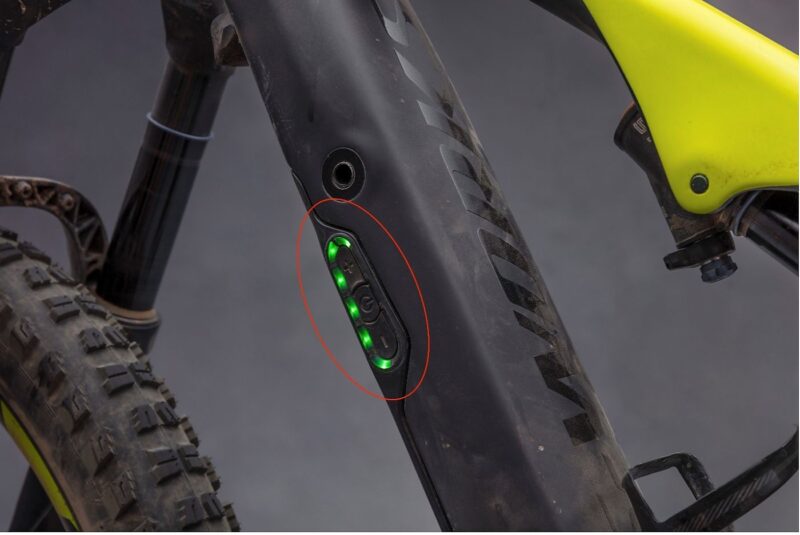
If you are planning to purchase an electric bike, you may want to know how much a new battery will cost. There are different types of batteries, such as Lead-acid, Nickel-cadmium, and Lithium-ion. Some of these types of batteries last for a long time, while others do not. The battery you purchase for your electric bike is going to depend on what type of vehicle you have and how much power you will be using. You will also need to consider the size of the battery, as well as the weight.
Amp Hours vs Watt Hours
When shopping for a new electric bike battery, you might have been exposed to the term watt hour. This is a useful measure of the amount of energy produced by a system over a given period of time.
Amp hours, on the other hand, are less helpful. These units of measurement are typically only 10 to 20. They are not very useful in the real world. The best way to measure amperage is to compare the voltages of various batteries.
The best way to determine if you need to get a larger battery is to figure out how much power you are likely to need. You might be surprised how much power your battery pack can produce. A larger battery can also be used to deliver less power for longer periods of time.
One of the best ways to find out which battery is right for you is to figure out what the manufacturer has to say about their product. Some of the more high-end ebike manufacturers make it a point to display their specifications on the battery itself.
Similarly, the best way to figure out how many watts a battery can deliver is to look at the voltage. Generally, the more Volts, the more watts.
However, these numbers are not necessarily indicative of how well a battery performs. The actual performance of a battery depends on a number of factors, including the cell type and the electrical controls. For example, an 18650 lithium-ion cell has a 3.6-volt output and a 2.0-amp output.
While a watt is a good measure of power, you cannot expect to get a kilowatt-hour out of your e-bike battery. Similarly, a 1200 Wh battery could only deliver 1 watt per hour.
Fortunately, there is a watt-hour to amp-hour converter. It includes a chart for 120V and 220V. To get the most out of this comparison tool, use it with a battery rated for the same voltage. As you can see, it can help you weed out deceptive marketing claims.
Lithium-ion batteries
Lithium-ion batteries are an excellent power source for your electric bike. They offer more range and longer lifespans than other types of batteries. While they cost more upfront, they provide more value over time.
Lithium-ion batteries also offer more reliability than lead-acid ones. These batteries are more stable and are easier to recharge. As a result, you can recharge your batteries more often without compromising safety or performance. You can also store them in deep sleep mode for long periods of time without damage.
Because of their durability and longevity, lithium-ion batteries are one of the most commonly used battery options for e-bikes. In fact, the sales of e-bikes are expected to rise to 40 million units by 2023.
Lithium-ion batteries are highly regarded for their reliability, durability, and lightweight design. The batteries can be recharged by plugging them into a wall outlet or wired charger. However, the batteries will take at least two hours to fully charge.
Electric bikes powered by lithium-ion batteries are ideal for reducing carbon emissions. Additionally, they are safer than lead-acid models. Although they are relatively new in the market, lithium-ion batteries have already been a game changer in other industries.
Depending on the model, your lithium-ion battery can last up to 1,000 full charges. This means that you can travel as many as 30 miles on a single charge. If you are planning to buy a lithium-ion battery for your e-bike, it’s important to read your owner’s manual carefully.
One thing to watch out for is the voltage. When you ride an e-bike, you should check the battery’s voltage to make sure it has enough capacity. It is possible that you will have to recharge the battery every few rides.
You can determine how much battery you will have by multiplying watts with hours. For example, a 48V/16Ah battery will have a total energy of 768 watt-hours.
Before attempting to recondition your battery, it’s a good idea to visit a professional repair service. Otherwise, you may compromise your warranty.
Lead-acid batteries
Lithium ion batteries are a great choice for an electric bike. They are light, reliable, and offer good performance. However, they are also expensive.
The battery that you choose will depend on the type of electric bike you have. For example, if you own a commuter e-bike, lithium ion batteries are the way to go. On the other hand, if you plan to ride around town, you might want to consider lead-acid batteries.
In the end, you’ll have to decide whether you want a sealed or wet cell. Sealed batteries are safer for your electric bike because they are protected by a hard plastic case. Compared to lead acid batteries, they are cheaper.
Another advantage of lithium ion batteries is that they can be charged in less than 30 minutes. On the other hand, lead-acid batteries take a lot longer to charge. You can expect to spend about five hours to charge a lead acid battery at 2 amps.
Lead-acid batteries are cheap and available at many hardware stores. They are also available at online retailers like Radioshack.
One downside of lead-acid batteries is that they are heavy. A typical lead-acid battery weighs over 25 pounds, which is twice the weight of a li-ion battery. That extra weight will reduce your range.
Lead-acid batteries can be recycled. If you aren’t sure if you can recycle your batteries, you can call a battery specialist to inspect your controls. Depending on the type of battery, the cost could vary between $10 and $50.
Lead-acid batteries have a high power output potential, but they aren’t as efficient as other types of batteries. Also, they’re not as safe.
LiFePO4 (LiFePO4 is the acronym for lead-free electrochemical polymer) is a drop in replacement for lead-acid batteries. It’s also the same voltage profile as lead acid, so it’s an ideal fit for electric bikes.
While lead-acid batteries are a good choice for your e-bike, they don’t last as long as other types of batteries. If you plan to cruise on your e-bike often, you might be better off with a lithium ion battery.
Nickel batteries
Electric bike batteries come in different kinds, including nickel-cadmium and lithium ion. They vary in price and features. Before buying one, consider its specifications, size, and durability.
Nickel-cadmium batteries offer several advantages over lead acid. For example, they are longer lasting and have a larger capacity. However, they are also more expensive.
Battery packs consist of small cells which are stacked together to deliver power. Choosing the right battery pack for your application is crucial. Batteries that are not of good quality will have a short lifespan and will take more time to recharge.
Buying a new battery for your e-bike is expensive. Batteries are the most expensive component of an electric bike. Many manufacturers sell replacement batteries for their models. Aside from the cost, you also have to consider the time, effort, and expense involved in building and maintaining an e-bike.
Unlike the lithium ion and nickel metal hydride battery types, NiCd has a high self-discharge rate. This makes it difficult to recycle. Fortunately, there are products that reduce self-discharge by up to six times.
Compared to nickel-cadmium, nickel metal hydride batteries are more fragile. This is due to the high specific energy they offer. Lithium ion batteries, on the other hand, handle higher temperatures better than older batteries.
Battery packs should be properly packaged and handled. Properly sealed batteries can avoid vibration damage and water evaporation. Some methods include duct tape, heat shrink wrap, and fabric.
If you’re unsure of which type of battery to buy, check your owner’s manual. The watts (watts = amps x voltage) and amp-hour rating are important factors to consider. In general, batteries that are higher in watts and amp-hours will provide more power. Typically, a battery with 400wh to 700wh can be found for $500-800.
Generally, premium e-bike batteries are made by multiple manufacturers, varying in price, specification, and quality. The Shimano batteries are a popular brand for electric bikes. Prices range from $500-750.
As with any purchase, choose a reputable vendor who advertises shipping legally. Getting your battery shipped illegally can lead to problems with your warranty.

